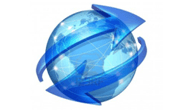Trade Cases

TRQ With EU a 'Great First Step'; UK, Japan, S. Korea Up Next?
Written by Michael Cowden
November 2, 2021
U.S. mill CEOs generally praised the tariff rate quota (TRQ) agreement reached with the EU. But they stressed that enforcement would be key to its success.
The United Kingdom, Japan and countries that have hard quotas – such as South Korea – are places that come to mind when one thinks of where a deal might be reached next, said Steel Manufacturers Association (SMA) President Philip K. Bell.
![]() But that shouldn’t happen overnight. “We’ve taken a great first step. … But we need to let this deal work through, make sure it is properly enforced” before agreements are reached with other countries, Bell said.
But that shouldn’t happen overnight. “We’ve taken a great first step. … But we need to let this deal work through, make sure it is properly enforced” before agreements are reached with other countries, Bell said.
He made the comments during a joint meeting of the SMA and the American Iron and Steel Institute (AISI) on Tuesday, Nov. 2.
Another area of concern is the approximately 1.1 million tons of EU steel that had exemptions to Section 232 and that have been “grandfathered” into the new TRQ deal. That figure is of “great concern” to U.S. steelmakers, Bell said.
“The devil is in the details,” Nucor President and CEO Leon Topalian agreed.
But while there are areas of concern, the domestic steel industry is very pleased that U.S. Trade Representative Katherine Tai made sure that “melted and poured” language was part of the TRQ deal with the EU, he said.
Those provisions – long a feature of U.S. policy – mean that steel melted outside of the EU will remain subject to tariffs. Think products such as hot-rolled coil made abroad and coated in the EU or slab melted elsewhere and rolled in Europe.
“Russia and China can’t bring material through the EU and into the U.S.,” Topalian said.
And the EU – while it is a player in the import market – is unlikely to bombard the U.S. with steel. “Taking the reins off or relaxing them on Europe is not going to cause a surge,” Steel Dynamics Inc (SDI) President and CEO Mark Millett said.
One area of concern that should be addressed in future agreements is carbon emissions associated with imports from countries without strict environmental regulations – such as slabs from Brazil, Cleveland-Cliffs Inc. Chairman, President and CEO Lourenco Goncalves said.
“Gaming the system is very easy. And slabs are one way to do that,” he said. “We are going to have to continue to educate the administration about that.”
AISI President and CEO Kevin Dempsey summed up the general mood when he said that Section 232 – initiated by the Trump administration and maintained by the Biden administration – had “stabilized” the domestic steel industry, allowing it to invest billions in more efficient and modern capacity.
The U.S., on the flat-rolled side alone, has invested or will invest more than $14 billion dollars to add more than 23.2 million tons of capacity – most of it via the electric arc furnace (EAF) route, according to figures compiled by SMU.
“The way we make steel is cleaner than it’s ever been,” Dempsey said.
By Michael Cowden, Michael@SteelMarketUpdate.com

Michael Cowden
Read more from Michael CowdenLatest in Trade Cases

Price: Reciprocal tariff changes and potential new tariffs for Brazil, Canada, others
Trade issues do not seem poised to leave the headlines anytime soon. And as recent developments show, the administration’s tariff policy remains ever-changing.

Bessent on Vietnam: 20% tariff stands, Section 232 protections apply
US Treasury Secretary Scott Bessent told reporters that tariffs for Vietnamese imports to the US are 20% and "specific industries" have trade protections under the Section 232 tariffs.

Steel groups welcome passage of budget bill
Steel trade groups praised the passage of the Big Beautiful Bill (BBB) in Congress on Thursday.

Canada moves to curb steel imports with TRQs
Canada has implemented tariff-rate quotas (TRQs) on steel imports to help stabilize its domestic market.

Commerce launches probe into unfairly traded rebar imports
Here are the details and a case timeline for the rebar trade case recently initiated by the Commerce Department.
